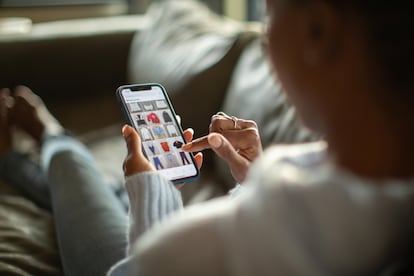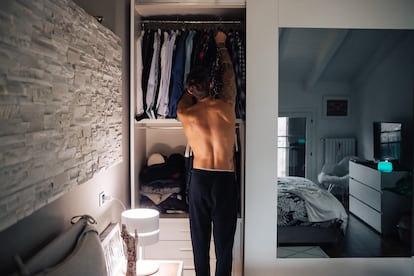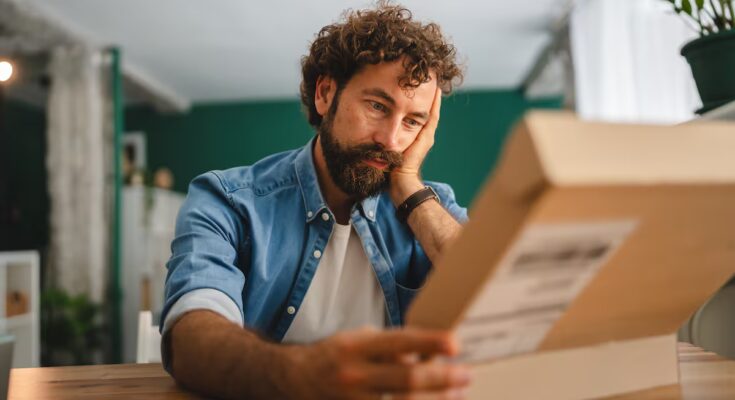“When I unlock my phone to buy something, I notice a mixture of anxiety and euphoria. I get very excited about the process of choosing what I want, comparing it, looking at different pages…”, says Ana, 34. “After making the purchase, I feel a mixture of calm followed, almost always, by a sense of guilt. Many times it happens to me that when the package arrives, I am very excited at the idea of opening it, but then the remorse doesn’t allow me to fully enjoy it.” Ana’s story accurately summarizes the cycle that psychologists describe for people who can’t control their drinking, especially during times like Black Friday and the weeks before Christmas: anticipation, momentary relief, guilt and repetition. A sequence that, far from being just a problem for the wallet, has deeper emotional roots.
The line between enjoying making some purchase and having a problem with it is relatively easy to cross. “We speak of a problem when we lose control and experience persistent negative consequences,” explains psychologist María Bernardo. “That is, when this behavior has a negative impact on the person’s daily life.” Among the most common indicators of the existence of a disorder, the expert cites the fact of shopping to regulate emotions such as stress, sadness or emptiness; failed attempts to set limits; hide purchases from people around us and lie about prices. Even the resulting sense of guilt or shame.
According to the specialist, it is important to look more at the trend than at the amount reached by the expenses: “There are people who earn more and their expenses do not significantly influence their economy. However, if they cannot regulate the impulsiveness that leads them to buy without limits, they have a problem.” Psychologist Eduardo Valenciano agrees. In his consultancy, he often observes that same loss of control that Bernardo talks about: “People with a shopping addiction would like not to make a purchase, but end up doing so; or they would like to buy certain products and end up buying many more”, he explains.
“These people do not buy the products they need, but rather they need to buy products because this calms an internal discomfort,” he summarizes. On many occasions, items tend to stay stored, with tags still attached, or end up being given away. “The purchase calms them momentarily. As they look for what to buy and carry out the action, all other worries disappear,” Valenciano says. Then comes the guilt and emptiness and the cycle starts again. Even family problems, since, more often than not, the environment censors these behaviors. “This caused me a lot of problems with my partner,” Ana explains. “He sees that I buy too many things that I don’t need and perceives it as a sign of selfishness.”
The brain also buys
This temporary relief that the two experts consulted speak of has a biological explanation. And dopamine, the neurotransmitter associated with pleasure and reward, plays a central role. “Anticipation, which consists of searching, comparing, adding to cart and imagining ‘I will buy this,’ activates the dopaminergic reward circuit,” explains Bernardo. That peak of euphoria and relief, however, does not last long: “After the click, comes the plateau and also the sense of guilt. If in this process the discomfort eases even for a little while, the brain learns the relationship and the habit is strengthened.” Over time, this circuit becomes sensitized and the person needs to shop more frequently or shorten the time between purchases to achieve the same feeling of control or well-being. What starts as a monthly gift can turn into micro-purchases several times a week. The purchase then stops being a decision and becomes an automatic response to anxiety, sadness or stress.
Added to this is a digital environment carefully designed to encourage these impulsive purchases. “Both social networks and discounts and advertising work through mechanisms of intermittency and urgency,” warns Bernardo. Ads with countdowns, “last chance” messages, or promotions for a limited time or quantity generate what is called “intermittent reinforcement,” a pattern that increases addiction. The psychologist also cites the role of social comparison: constantly seeing others, especially on social media, showing off your purchases or your lifestyle “feeds the need for external social validation, giving the feeling of being left behind if you don’t have it”.
Valenciano also points out that sales platforms use the same resources as casinos. online– Random rewards, constant notifications, slot aesthetics and surprise discounts. “All of this activates the brain’s reward system and can encourage compulsive use,” he says. “These stores incorporate gamification strategies that turn shopping into a game-like experience. Satisfaction is gained not so much from the product purchased, but from the experience of having it.” livestock“. A review published in 2024 on International Journal of Accounting, Finance, Auditing, Management and Economics concluded that the intensive use of social networks is associated with an increase in impulsive purchases, due to constant exposure to stimuli, recommendations and personalized promotions. Commercial data also points in this direction: according to a report from the technology company marketing Bluecore during Black Friday 2020, 72% of purchases made on those dates in the United States were impulse purchases.

When should the alarm sound?
Bernardo suggests asking yourself if you are capable of putting off a purchase for 24 or 48 hours without anxiety. «Not knowing how to wait, or buying especially when you are tense, sad or bored, are signs that the purchase probably regulates an emotion and does not cover a real need», he explains. He also urges you to check your carts and closets: “If they are full of duplicates or nearly identical items, or if the purchase is regularly labeled as a ‘bad day reward,’ there may be something else behind it.” Valenciano adds that another frequent sign is the constant need to try something new to feel valid, as well as checking stores or apps multiple times a day. When these behaviors generate debts, arguments or inconveniences, he says, “we are no longer dealing with a simple hobby, but rather with a behavior that interferes with life”.
With Black Friday and Christmas so close, psychologists insist that it’s not about demonizing consumption, but about learning to do it consciously. Bernardo recommends “a mandatory break of 24 to 48 hours to verify that what you intend to purchase is a necessity”. He also recommends having a closed list and budget before accessing applications or stores, defining digital hygiene: eliminate notifications, unsubscribe from newsletter from stores or brands and delete card data saved in your browser and mobile phone. Furthermore, if possible, it is good to anticipate the triggers for the purchase. If this behavior usually occurs when you are stressed or sad, suggest “taking a walk, calling a friend, or practicing breathing.” He even suggests the so-called “one in, one out” rule: if one coat goes in, another must go out.

Valenciano adds that prevention also involves the creation of alternative rituals, such as resorting to second-hand goods or having an “external ally”, someone we trust with whom we can share the wish list to help us maintain control.
Ana has begun to apply some of these strategies in her own therapeutic process, which she continues with María Bernardo. “I’m working on incorporating some digital hygiene techniques into my routine, like silencing notifications, deleting shopping apps, and spending as much time as possible using social networks,” she says. Even so, he acknowledges that “what is most difficult is the issue of social networks,” to which there is constant exposure influencers and trends act as a trigger.
Asking for help and going to therapy should not be a last resort, but rather a sensible decision when discomfort or loss of control in this area becomes evident. “When there is an economic impact, a conflict with the partner or family, or when the purchase acts as the main emotional regulator and it has not been possible to change it, therapy helps to identify the triggering factors, train tolerance to urgency and build regulation alternatives that are maintained over time,” says Bernardo.
Valenciano insists there is still a need to destigmatise: “Addictions, including shopping addiction, are a mental health problem. It’s not a vice or a lack of willpower,” he says. “These are people who suffer, who experience it with shame and guilt, and who have difficulty explaining it because they feel judged or because the environment underestimates the problem.” For him, family support is fundamental: “Accompanying instead of criticizing reduces suffering and improves healing.”



